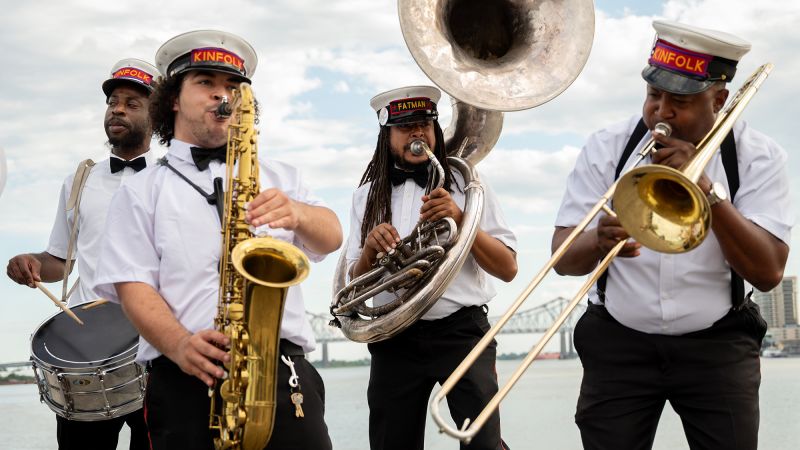EDITOR’S NOTE: A new series “New Orleans: Soul of a City” explores the many ways the city communes with its history – through music, food, sports and tradition – revealing how, 20 years after Katrina, New Orleans is louder and more resilient than ever. The series premieres Sunday, October 5 at 10pm ET/PT.
New Orleans —
A bowtie is adjusted. A trombone is hoisted. On the corner of Dauphine and Toulouse, two motorcycle cops block the intersection.
The opening notes of “Just a Closer Walk with Thee” emerge from a trumpet. The melody is carried as a saxophone and sousaphone join in. The band moves through the streets of New Orleans, the crowd right behind them. At first a dirge, then the tempo rises, and the hymnal swells. Block-by-block it grows reverent. Ardent, and joyful.
A funeral second line parade is an emotional experience –– a public, shared display of grief that evolves into celebration of a life. It’s a custom born of West African and Caribbean cultures, now entirely New Orleans.
The term “second line” refers directly to the people behind the musicians, i.e., the second line is any dancers, crowds and general merrymakers. As a term overall, it’s a name for certain parades in the city, honoring momentous occasions. Some are a few blocks, but for large events, they might march miles.
Second line parades mark funerals here, but also weddings, social gatherings and important events. New Orleans is a town where a trombone can cause a traffic jam, and a sousaphone can lure a thousand people into the streets.
At the heart of every second line is the brass band, those musicians in white, pressed shirts and creased black pants, who carry a weight heavier than their instruments.
Continue Reading on CNN
This preview shows approximately 15% of the article. Read the full story on the publisher's website to support quality journalism.
